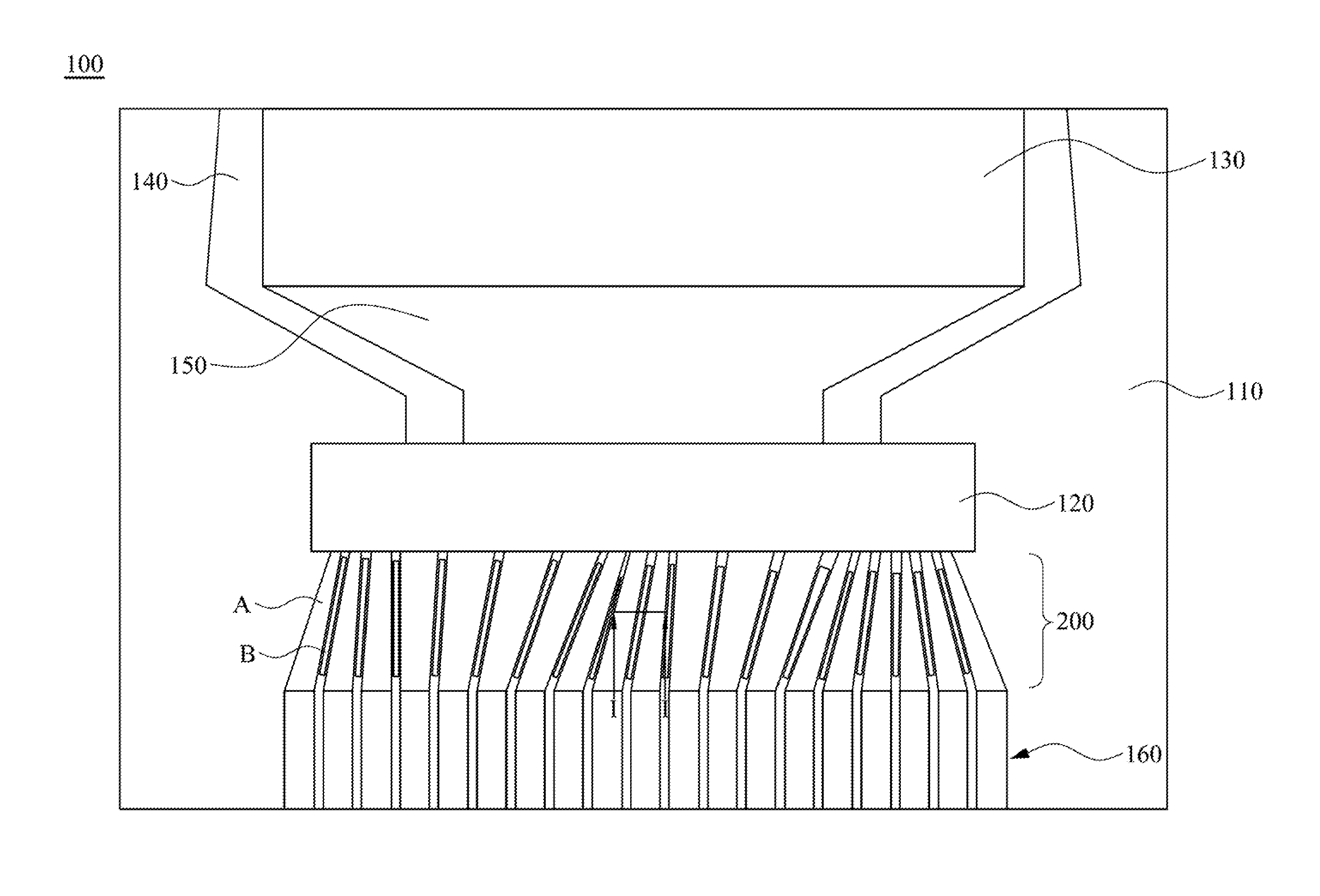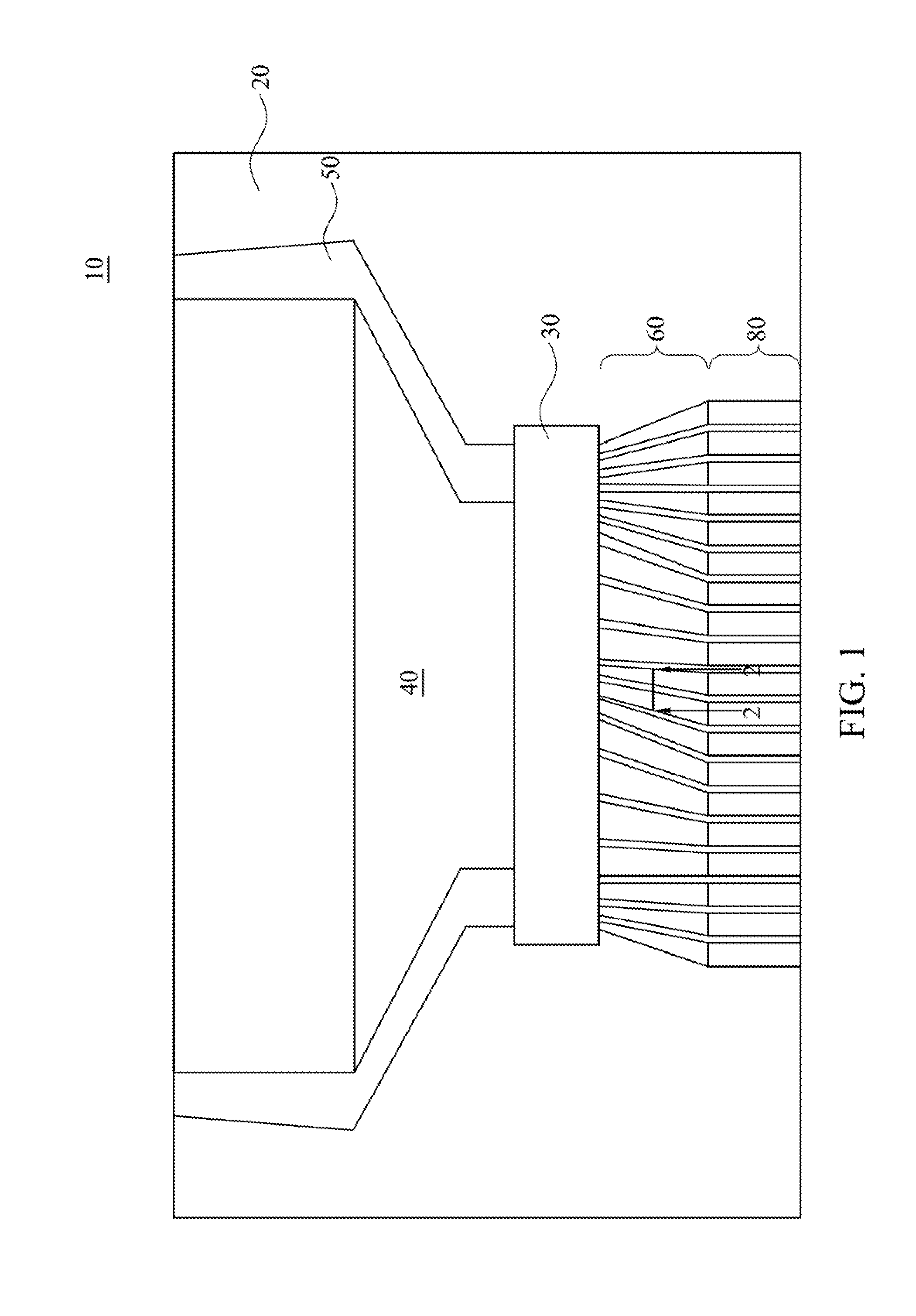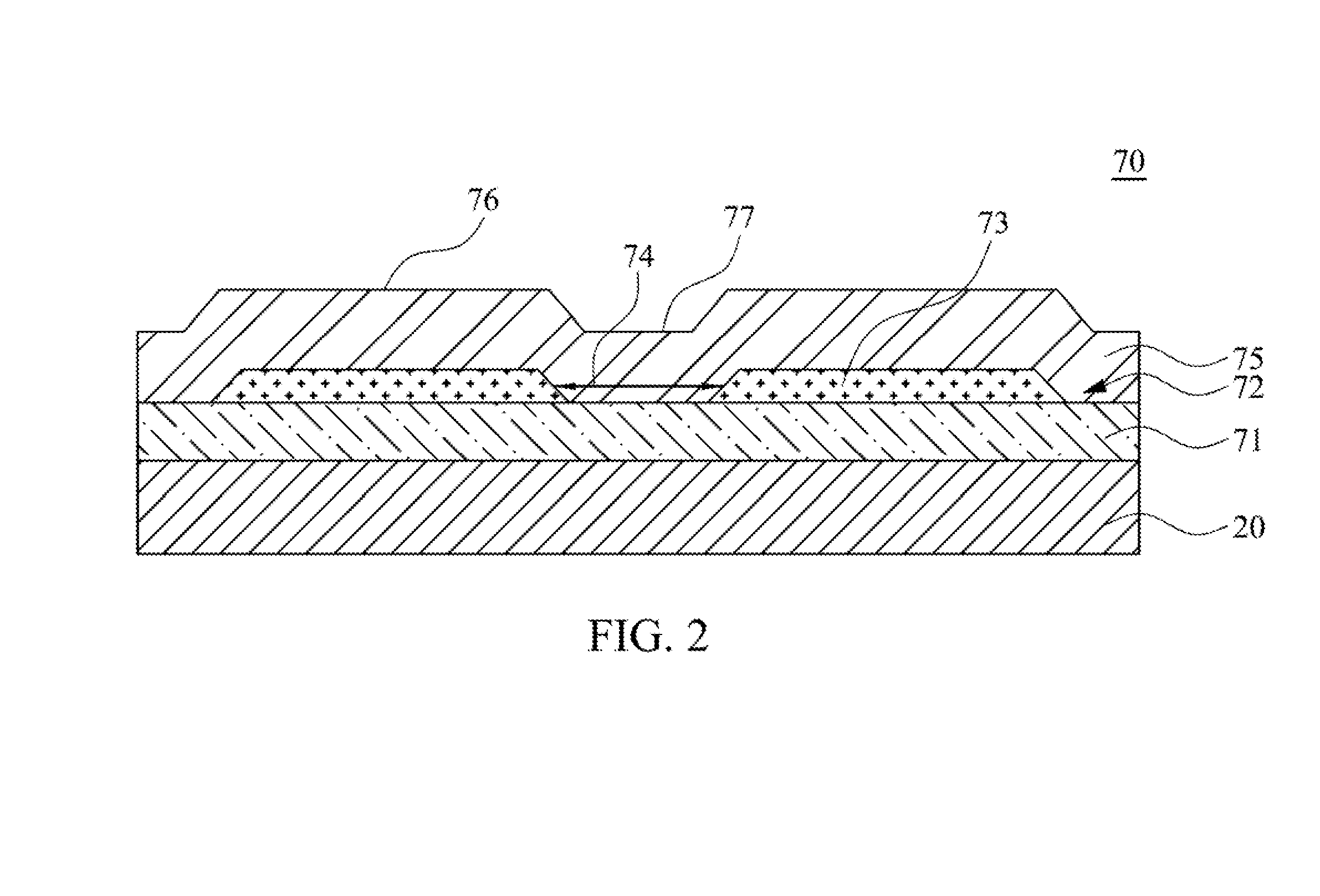Circuit stack structure
a stack structure and circuit technology, applied in printed circuit aspects, non-metallic protective coating applications, metallic pattern materials, etc., can solve the problems of increasing the manufacture or maintenance cost, increasing the risk of conductor layer damage, and affecting the quality of circuits, so as to protect the wiring from the risk of scratching, improve the qualified rate, and reduce the effect of resistan
- Summary
- Abstract
- Description
- Claims
- Application Information
AI Technical Summary
Benefits of technology
Problems solved by technology
Method used
Image
Examples
first embodiment
[0043]Referring to FIGS. 3 and 4, in the first embodiment, the first insulation layer 610 is disposed on the glass substrate 110, for example directly disposed on the glass substrate 110. The first conductor layer 400 is disposed on the first insulation layer 610. In other words, the first insulation layer 610 is disposed between the first conductor layer 400 and the glass substrate 110, or even the first insulation layer 610 is directly positioned between the first conductor layer 400 and the glass substrate 110.
[0044]The first propping portions 700 are disposed in the first conductor layer 400 and are coplanar with the first metal wires 410. That is, the minimum vertical distance D1 from bottom surfaces of the first propping portions 700 to a reference surface (e.g. the top surface of the glass substrate 110) is equal to a minimum vertical distance D2 from bottom surfaces of the first metal wires 410 to the reference surface (e.g. the top surface of the glass substrate 110).
[0045]...
second embodiment
[0056]In a variation of the second embodiment, when the second insulation layer 620 covers the first propping portions 700 in the second areas B, the second insulation layer 620 directly contacts the glass substrate 110 at two opposite sides of the first propping portion 700, so as to avoid physical contact between the first propping portions 700 and the first metal wires 411 disposed at two sides thereof.
[0057]Therefore, during manufacturing, the first conductor layer 401 (the first metal wires 411 and the first propping portions 700), the second insulation layer 620 and the protective layer 801 are sequentially formed on the glass substrate 110. Based on the first metal wires 411 and the first propping portions 700, corresponding convex portions are respectively formed on top surfaces of the formed second insulation layer 620 and protective layer 801 in the first areas A and the second areas B, so as to ensure that the top surface of the protective layer 801 in the first areas A i...
fourth embodiment
[0086]FIG. 15 is a cross-sectional view of FIG. 14 along a line Referring to FIGS. 14 and 15, The transition line area 201 includes a circuit stack structure 301. The circuit stack structure 301 includes a first conductor layer 403, a third insulation layer 630, multiple sixth propping portions 760 and a protective layer 803. The first conductor layer 403 and the third insulation layer 630 are both disposed on the glass substrate 111. The first conductor layer 403 includes multiple first metal wires 413 arranged at intervals.
[0087]A first gap G1 is disposed between any two adjacent first metal wires 413, and two ends of each of the first metal wires 413 are respectively connected to the FPC pad area 161 and the driver chip 121 (FIG. 14). The sixth propping portions 760 having long and narrow shapes are arranged in parral with each other on the third insulation layer 630, and are electrically isolated with the first metal wires 413, the FPC pad area 161 and the driver chip 121. The p...
PUM
 Login to View More
Login to View More Abstract
Description
Claims
Application Information
 Login to View More
Login to View More - R&D
- Intellectual Property
- Life Sciences
- Materials
- Tech Scout
- Unparalleled Data Quality
- Higher Quality Content
- 60% Fewer Hallucinations
Browse by: Latest US Patents, China's latest patents, Technical Efficacy Thesaurus, Application Domain, Technology Topic, Popular Technical Reports.
© 2025 PatSnap. All rights reserved.Legal|Privacy policy|Modern Slavery Act Transparency Statement|Sitemap|About US| Contact US: help@patsnap.com



